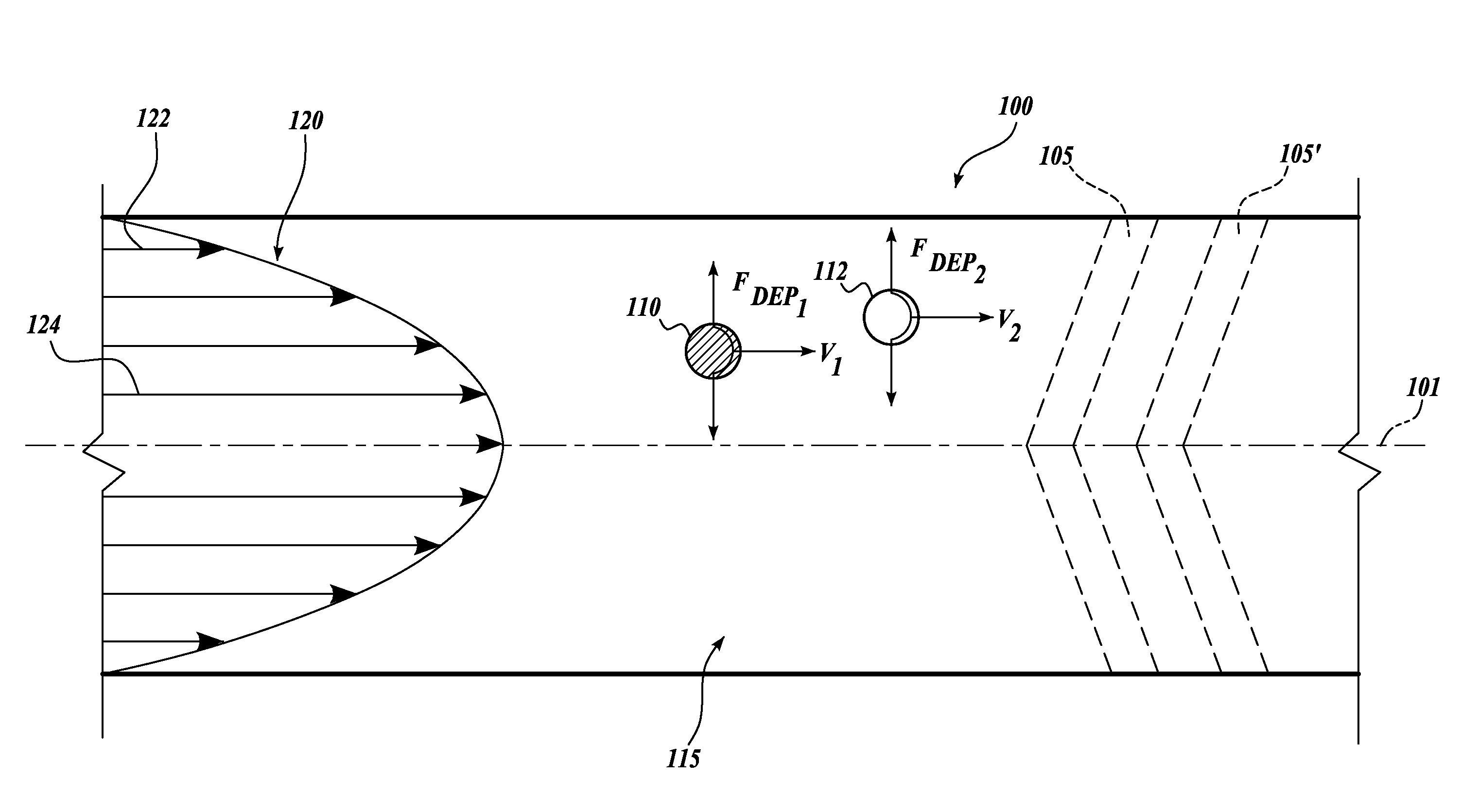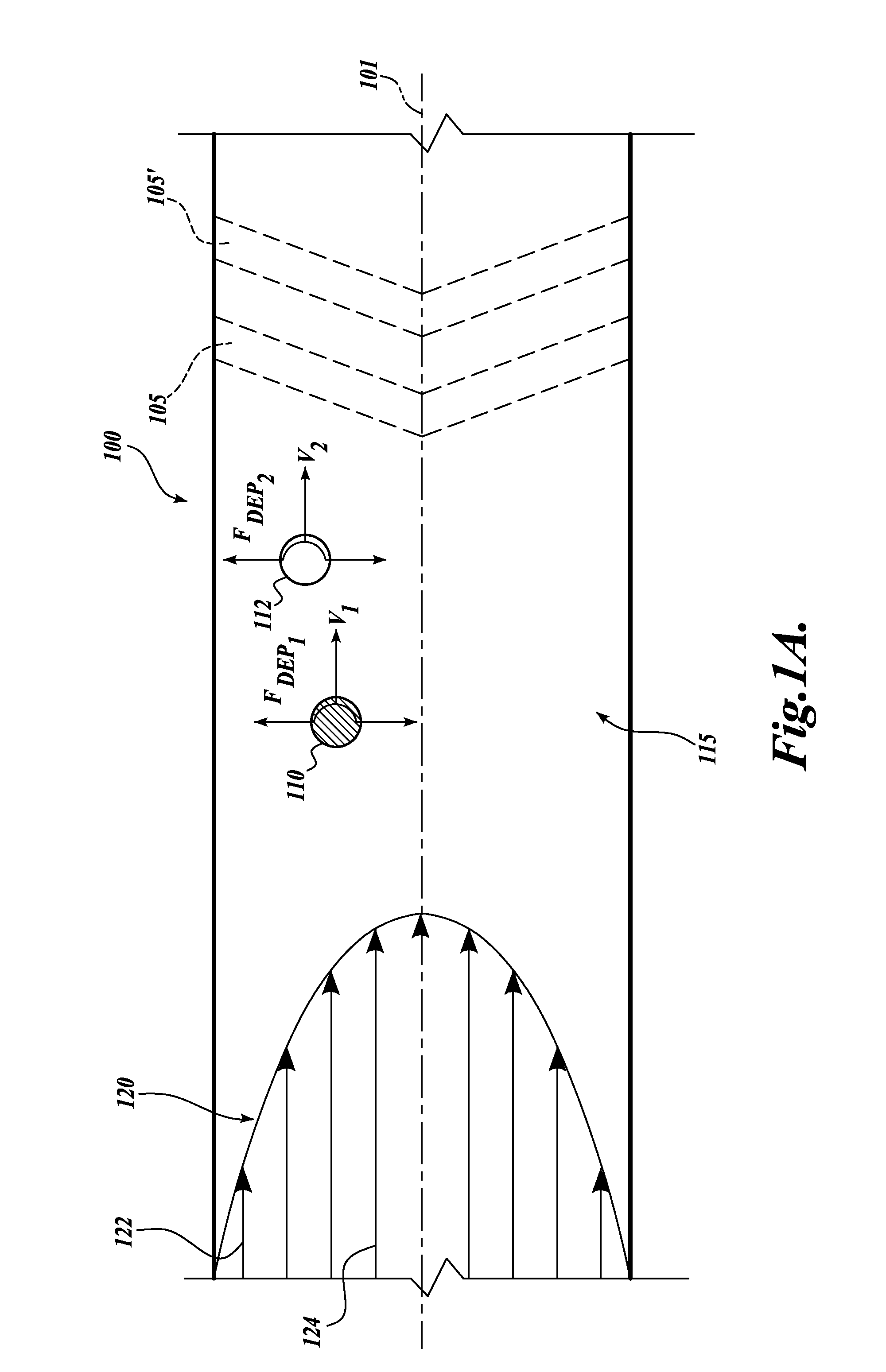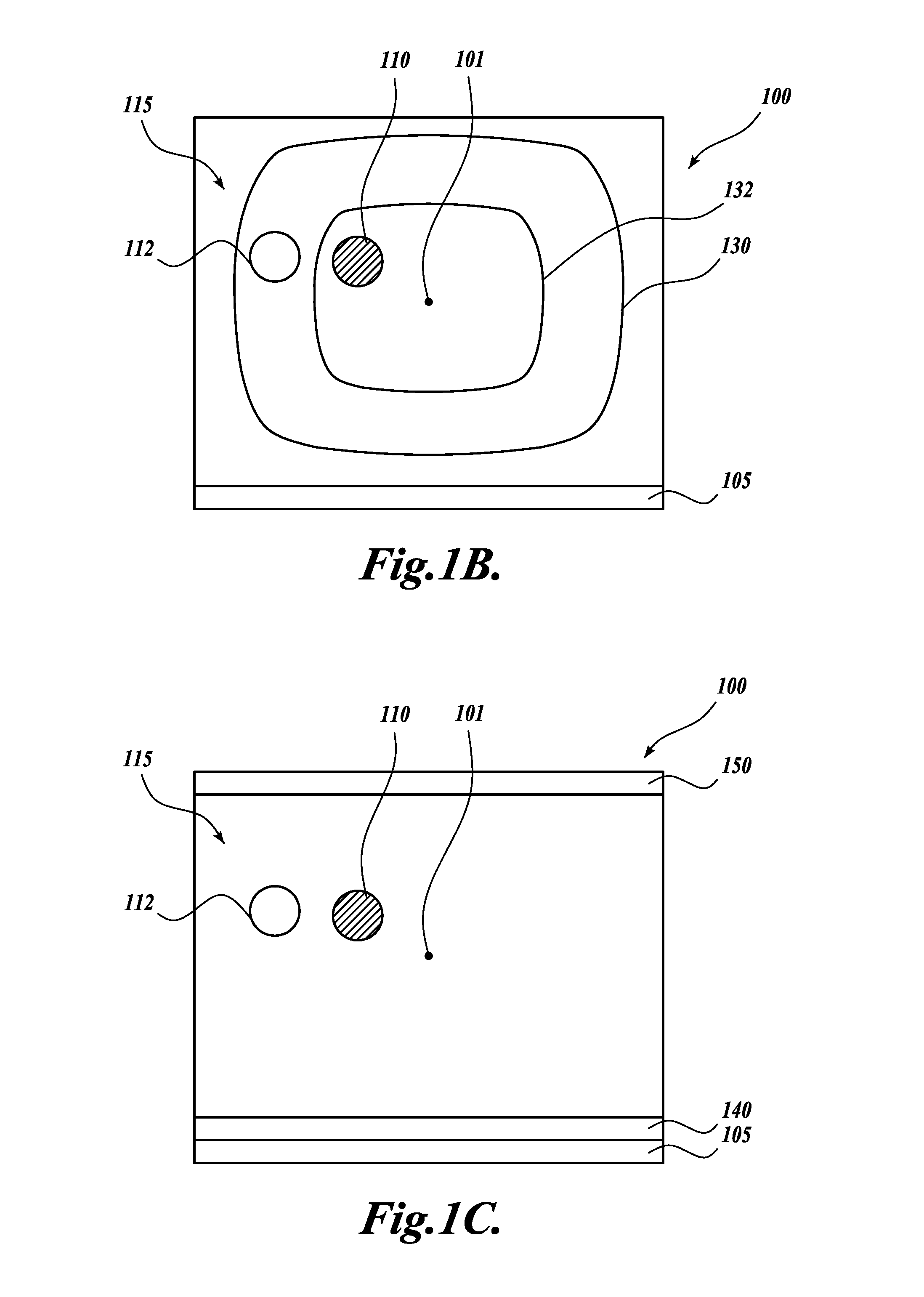Time-varying flows for microfluidic particle separation
a microfluidic particle and flow technology, applied in electrostatic separators, diaphragms, electrolysis, etc., can solve the problems of time-consuming, manual preparation of experimental setup, standard separation method, pulsed-field gel electrophoresis (pfge), etc., and achieve the effect of not being able to accommodate continuous flow in microfluidic devices
- Summary
- Abstract
- Description
- Claims
- Application Information
AI Technical Summary
Benefits of technology
Problems solved by technology
Method used
Image
Examples
Embodiment Construction
[0030]The invention provides methods, devices, and systems for manipulating particles suspended in a liquid.
[0031]In one aspect, a method for spatially sorting particles using dielectrophoresis and field-flow fractionation is provided. The method includes the steps of:
[0032]providing a channel having a first side and a second side;
[0033]providing a first plurality of electrodes extending into the channel, and a second plurality of electrodes interdigitated with the first plurality of electrodes and extending into the channel, the first plurality and second plurality of electrodes being disposed on one of the first side and the second side of the channel, and further wherein the first plurality and second plurality of electrodes are concave-shaped and substantially symmetric about a center line of the channel;
[0034]applying a voltage to the first plurality and second plurality of electrodes such that the first plurality of electrodes is at a different electric potential than the seco...
PUM
 Login to View More
Login to View More Abstract
Description
Claims
Application Information
 Login to View More
Login to View More - R&D
- Intellectual Property
- Life Sciences
- Materials
- Tech Scout
- Unparalleled Data Quality
- Higher Quality Content
- 60% Fewer Hallucinations
Browse by: Latest US Patents, China's latest patents, Technical Efficacy Thesaurus, Application Domain, Technology Topic, Popular Technical Reports.
© 2025 PatSnap. All rights reserved.Legal|Privacy policy|Modern Slavery Act Transparency Statement|Sitemap|About US| Contact US: help@patsnap.com



